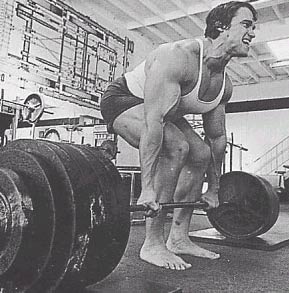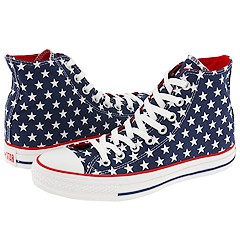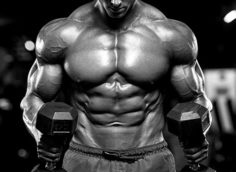In one of his greatest In Living Color skits, Jim Carrey spoofed palsied poet Christy Brown, the hero of My Left Foot. Brown became an Irish ass-kicking machine in "My Left Foot of Fury," wielding nunchuks and brass knuckles on the bare foot of his one working limb.
What does that have to do with building strength and size?
Nothing. I just think it's a funny bit. But it does bring up an important lesson about human physiology: Our feet have the potential to do almost everything we do with our hands.
"There are people who are born without arms who have to use their feet," says Martin Rooney, a former orthopedic physical therapist and now strength coach at the Parisi Speed School in New Jersey. "They can play the guitar with their feet. They can put in contact lenses. But we can't even pick up a pencil with our toes. We have all lost that ability. So, when we ask ourselves for a higher level of performance, how can we expect it to be there?"
Shoes Make You a Lesser Man
Through years of wearing shoes, our feet lose their tactile capacity, which is bad enough. But they also fail to develop to their proper size and shape. Tendons and ligaments shorten, muscles weaken, and the risk for foot and ankle injuries increases.
If it sounds like the ancient Chinese tradition of binding the feet, it kinda is. "It's identical, but to a lesser degree," Rooney says. "Shoes crush the foot into abnormal positions and you don't get the movement the foot is designed for."
And while that might be a puppy upper to the foot fetishists among us, it's a doggie downer when it affects your results in the gym.
Because your feet are the only point of contact between your body and the floor on most lifts, your lifting success depends, in part, on their proprioception — the sense of where they are in space. The more precisely they work to grip the floor, the better they'll help you activate the muscles farther up the movement chain.
Rooney believes that if you free your feet up, allowing them to move and react to the surface beneath them, your lifts will show commensurate improvement. "Just like strengthening the rotator cuff can improve your bench press, strengthening the lower limbs is going to let you run faster, jump higher, and lift more weight," he says. "Your numbers will go up."
Bare feet, big weights.
The Liberation of Your Soles
The first step is easy: take your shoes off. Walk around as much as you can without them. This, of course, is a highly situational strategy. Unless you're a lifeguard, you probably can't go barefoot at work. So you should make up for that by spending as much leisure time as possible unbound by leather and shoelaces.
Next, you want to begin the transition to barefoot training, or the closest equivalent your gym will allow.
The following is a basic model for how you can progress from being a shoe guy to going native, as provided by Jon Hinds, former strength coach for the Los Angeles Clippers and founder of Monkey Bar Gym in Madison, Wisconsin, where shoes aren't allowed. Those who spend most of the day in tight or bulky shoes will probably want to follow the model more carefully than the guys who're used to going hours at a time in bare feet or sandals.
If you do lots of Olympic lifts, or other types of fast or explosive training, you want to be especially careful with this transition. You risk lower-leg injuries like plantar fasciitis (inflammation of the connective tissues on the bottom of your feet) or shin splints if you go to barefoot training before your feet are ready.
Step 1: Chucks
Serious gym rats already know that Converse Chuck Taylors are great for powerlifts and other basic exercises. The sole is thin and there's hardly any arch support, ensuring that your foot makes close contact with the floor and learns to stabilize itself.
The trick is to buy a pair that's one size too big, Hinds says. That's because most of us instinctively choose shoes that are tight and restrictive, which defeats the purpose. (Converse encourages this "restrictive" mindset on its website by telling men to buy Chuck Taylors that are a half-size smaller than their other shoes.)
"It's like me wrapping some duct tape around your hand before you do a handstand, taping your thumb in," Hinds explains. "You have no ability to activate the arches of your hand because your thumb is in and all your weight is going to collapse on your hand."
Wearing oversized Chucks will feel weird at first, like a day in the life of Sideshow Bob. You won't want to do anything that requires running, jumping, or agility. But a funny thing starts to happen when you give your feet some room to spread out. After a few weeks, they'll literally spread out.
They only feel weird for a while.
"I used to wear a size 12, and now I wear a size 14," Hinds says. "I allowed my feet to spread to the actual size they're supposed to be."
If you object to Chucks for any reason — fashion, function, faith — you can try your luck with the Nike Free. It's good for the same reasons.
Step 2: Sanuks
After a month or two of training in oversized Chucks, you can try switching to a pair of Sanuk Vagabonds, slip-on shoes with what the manufacturer calls "barefoot untechnology." The selling point is an unrestrictive upper on a sole normally used for sandals. They're comfortable, and offer even less arch support than Chuck Taylors. Make sure you buy them in your new shoe size.
Sanuk Vagabonds: one step closer to nothing at all.
Step 3: Vibrams
With a month or so in Sanuks, you're ready to train barefoot, if that's an option for you. If it's not, the closest equivalent to shoeless jonesing is Vibram FiveFinger shoes, which have thin soles and individual toe pockets. You can do any kind of cardio, explosive training, or heavy lifting in Vibrams.
Bear in mind that the change from any shoes to Vibrams or bare feet is so extreme that your feet will likely be sore the next day just from walking around. If you're doing cardio, you may need to cut back on your training a bit until you adapt.
FiveFingers help your feet, not necessarily your judgment in choosing exercises.
Barefoot Lifting
If you generally walk around in loose shoes or thin-soled sandals anyway, you can do pretty much every standard strength exercise shoeless with little or no delay, though you might want to keep the kicks on for heavy squat workouts. "It's not comfortable stepping out of the rack barefoot with 400 or 500 pounds on your back," Rooney says.
We'll take his word for it.
For those who do Olympic lifts, Hinds suggests performing one or two of your lighter workouts barefoot every week, and then using shoes for heavy days until you adapt.
Deadlifting should feel natural right away, as you'll gain a mechanical advantage from being closer to the floor and shortening the range of motion.
Lunges and step-ups, on the other hand, may take some adjustment as you find your balance. Front squats will probably be the most awkward of all. "When you're barefoot, it magnifies your incorrect alignment issues more," Hinds says.
Breaking In
All of which sounds great ... except to those of us who work out in commercial gyms, where shoes are required and nobody wants to be the first person to train in stare-inducing Vibrams. Even Sanuks will draw unwanted attention to your feet when virtually everyone else in the facility is wearing cross-trainers.
Fortunately, there's an easy way to get into unshod training without drawing any stares or breaking any rules: Warm up barefoot in an unoccupied yoga studio or aerobics room. Even five minutes will improve proprioception and reduce injury risk, Rooney says.
He suggests including these in your warm-up routine:
Forward skips
Side shuffles
Carioca
Backward running
Rope jumping
After you're finished warming up, put on your Chucks and hit the weights.
Will the Dogs Bark?
Rooney says he's never had a client who complained that barefoot training caused foot pain or led to injury, and he trains several MMA fighters who compete sans footwear. "What I will hear them say is 'Man, my calves and my hips feel stuff differently now.' "
Hinds doesn't permit any shoes other than Vibrams in his gym, and his clients do box jumps, depth jumps, and every other high-impact exercise you can think of barefoot.
Weak arches? Not a deal breaker, Hinds says. Get into it slowly, giving your feet time to adjust, and you should be fine. If you currently wear arch supports, use them when absolutely necessary (running workouts, workdays in which you'll spend a lot of time on your feet), but try to go barefoot around the house. Switch to bigger shoes with less arch support for gym workouts.
Another counterintuitive tip for those with arch enemies: work on your flexibility. Hinds recommends Eischens yoga because of its emphasis on strengthening your weakest links.
Wrapping It Up, and Addressing the Imelda Problem
Just to be clear, we aren't saying you have to go out and buy all these shoes. Chucks are cheap — you can find them online for less than $30 — but the others add up. Nike Frees and Sanuk Vagabonds are closer to $50 online. We haven't seen any terrific discounts on Vibrams, which, like the Nikes, carry a full retail price around $85.
A lot of you are already training in Chucks, and as the article suggests, you can skip the intermediate steps if you're ready to train barefoot.
If you do buy one or more of them, they won't be useless after you move on to another type of footwear. You'll still have comfortable shoes you can wear outside the weight room.
The benefits of making the transition to barefoot training, or the closest equivalent, are considerable. "I'd be so bold as to say that barefoot training prevents ankle sprains and ACL injuries," Rooney says. "When the foot becomes more reactive, injuries disappear."
And if you're not interested in that aspect of barefoot training, you should at least be interested in maximizing your lifts.









